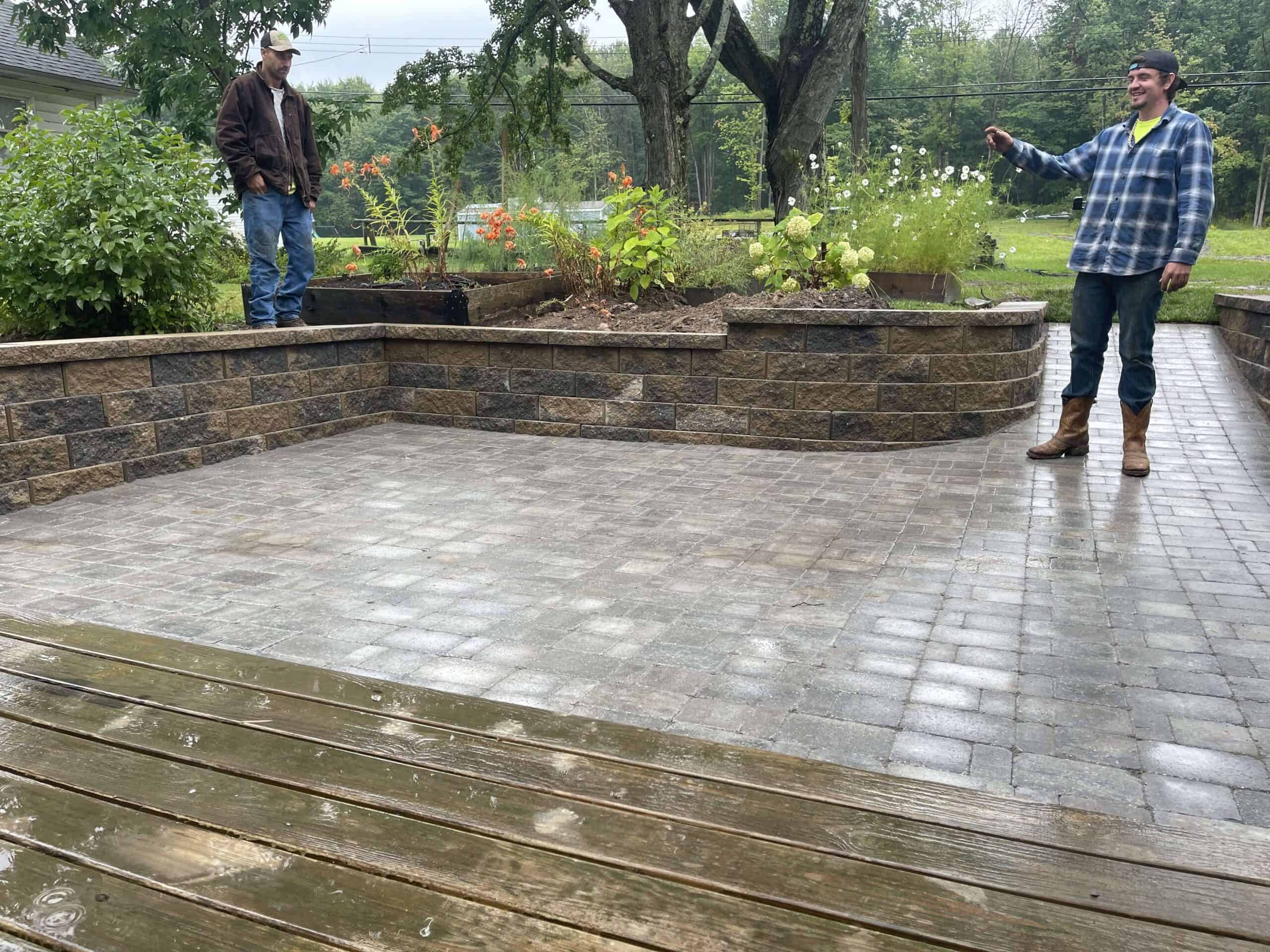Hardscape Design Principles
Effective hardscaping requires diligent material selection and professional construction processes. However, it also requires fundamental design principles. Hardscape design encompasses elements like patios, walkways, retaining walls, and more. Achieve functional harmony with the essential principles outlined in this blog.

The Importance of Balance in Hardscape Design
Design balance is critical when creating new hardscapes. Homeowners and businesses must distribute visual weight equally within outdoor living spaces. Achieving balance involves ensuring that Hardscape design elements are arranged in a way that feels harmonious and stable. There are two types of balance - symmetrical and asymmetrical. Designers can utilize both to create the desired aesthetic. Symmetrical balance mirrors elements on either side of a central axis, creating a sense of equilibrium and formality. Meanwhile, asymmetrical balance arranges elements of varying visual weight to achieve equilibrium through proportion. While symmetrical designs are often used in formal gardens, asymmetrical designs allow for creativity and flexibility. Contact local hardscape experts for more tips and information.Understanding Proportion in Hardscaping
Proportion is the relationship between the sizes of different elements within a hardscape design. Thus, achieving proportionate landscaping means ensuring elements are appropriately scaled relative to one another and the space. Proper proportion creates a harmonious and cohesive atmosphere, while improper proportion can lead to a disjointed or overwhelming aesthetic. Therefore, proportion is critical in determining the scale of features such as patios, walkways, and retaining walls. For example, a patio that is too large for its space may overpower the rest of the lawn. However, a patio that is too small may feel cramped and inadequate. Carefully consider each element's scale in relation to the whole and ask designers to help you create hardscaping that fits.Rhythm and Blues
Rhythm in hardscape design refers to the repetition or pattern of elements within a particular space. Just as rhythm is essential in music and dance, it adds movement and visual interest to your landscape. Create a sense of flow and continuity that draws the eye through the space. Achieve rhythm through repeating materials, shapes, or motifs. For instance, a patterned brick walkway or a series of evenly spaced pavers can create a rhythm that guides the viewer's gaze along a path or across a patio. Ask your team how to vary the rhythm within the design while maintaining proportion and balance. TIP: Check how your hardscape design will impact lawn maintenance needs.Creating Focal Points with Hardscapes
Focal points draw attention and act as anchors for outdoor living spaces. They can be natural features such as trees or flower beds or synthetic elements such as fire pits or sculptures. Consider the visual impact and relationship to the surrounding elements when selecting focal points for a hardscape design. Place focal points in areas where viewers can easily see and appreciate them. Then ensure each element complements the surroundings rather than competing with the other features.
Unity is an essential design principle that ties together all elements. It helps create a cohesive and harmonious environment. However, achieving Unity means ensuring that every element, from materials and colors to shapes and textures, works together for a sense of completeness and intentionality.
TIP: Coordinate materials, colors, and elements by repeating similar materials or design motifs throughout the space.
Consider the visual impact and relationship to the surrounding elements when selecting focal points for a hardscape design. Place focal points in areas where viewers can easily see and appreciate them. Then ensure each element complements the surroundings rather than competing with the other features.
Unity is an essential design principle that ties together all elements. It helps create a cohesive and harmonious environment. However, achieving Unity means ensuring that every element, from materials and colors to shapes and textures, works together for a sense of completeness and intentionality.
TIP: Coordinate materials, colors, and elements by repeating similar materials or design motifs throughout the space.
 (315) 853-3798
(315) 853-3798 sales@newmanlandscaping.com
sales@newmanlandscaping.com